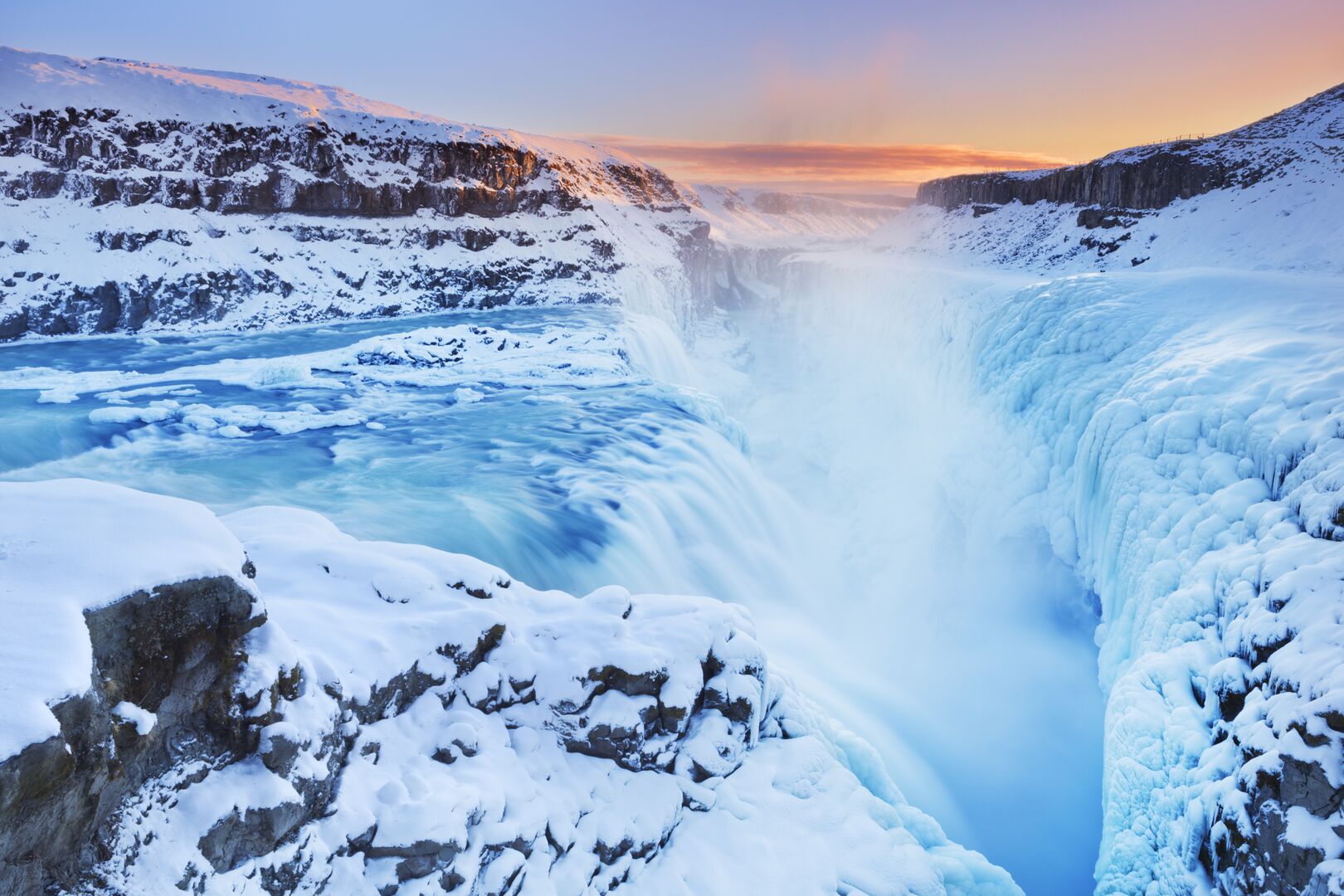Winter in Iceland: Travel advice and tips
Icelandic winters are a wonderful experience. There’s so much to love about this time of year here, from the long nights potentially filled with northern lights to the beautiful snowy landscapes. Plus, this is when Iceland's natural beauty truly shines, with late-morning sunrises bringing pink dawn skies, and spectacular sunsets that can last for hours.

Gullfoss waterfall at sunset
Despite the short daylight hours, there’s plenty of activity going on during Iceland’s winter. Christmas and New Year's Eve are big celebrations that do a great job of brightening the darkness. Then there's all the traditional knitwear, cozy gatherings, books to read, geothermal pools to soak in, ice caves to explore, skiing, snowboarding and snowmobiling adventures, and so much more...
However, winter travel can also bring some safety concerns, with cold temperatures, limited daylight, and sometimes tricky road conditions.
But don’t be daunted. We’ve put together this guide to help you get prepared for your trip and find out everything you need for the perfect Icelandic winter vacation.